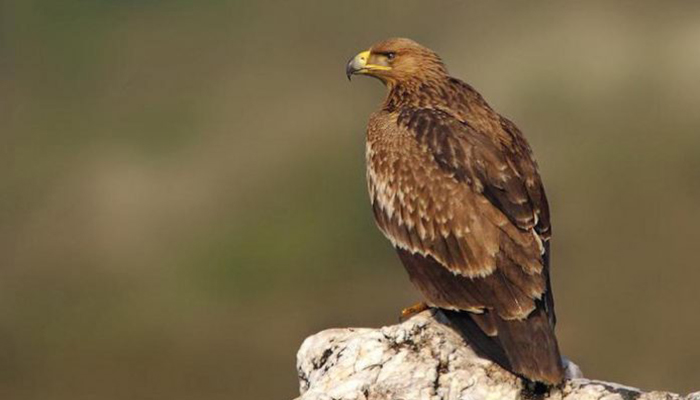
English: Eastern
Imperial Eagle, Imperial Eagle
Russian: Могильник
German: Kaiseradler
French: Aigle
imperial
Mongolian: Хан бүргэд
Japanese: カタジロワシ (Katajiro-washi)
Status: Rare species. According to the IUCN RedList categories and
criteria, the species evaluated as-Vulnerable.
Distribution and Range: Breeds in Russian Federation, Hungary, Balkan and Pyrenean
Peninsulas, Cyprus, Turkey. North Iranand Morocco.Winters in Africa all the way
to Ethiopia, in Southern Asia from Iraq to southern China. In Mongolia: Breeds
in the Khentii, Khovsgol Mountains, Orkhon and Selenge River basins. It
migrates through the breeding areas, forested areas, forest steppes, open
drylands, mountain slopes near Altai, Middle Khalkh and Eastern Mongolian
steppes, the Bulgan River valley in Khovd aimag. Migrating birds were sighted
grazing on the Khar Us Lake, Zavkhan and Selenge rivers in Khovd Aimag, Khujirt
and Orkhon Rivers in Ovorkhangai Aimag. From the satellite tracker data,
juvenile, young birds migrated from the southern border of the Russian
Federation near Ulaanbaatar, further through the Sukhbaatar Aimag territory. On
migration passage on a vast area from forest steppe to desert steppe 1-2 are
sighted rarely.
Habitat: The breeding pairs build large nests on old tall trees of mixed
deciduous and coniferous forests in river valleys of taiga, forest steppe
zones.
Population and Threats: In Mongolia, the species are breeding visitors and passage
migrants. Threats: Mining developments in the breeding areas, treel logging for
commercial and household needs, establishing tourist camps, not only degrades
and destroys the breeding habitat, but also causes disturbances restricting
them from peacefully rasing their new families. Forest fires also destroy the
nesting and summering habitats. During fall migration, Arab falconers have been
trapping falcons using pigeons, accidental death occur from being trapped
instead of falcons. During fall migration, breeding season might die from
ingesting poisons and pesticides used against the Brands voles, and forest
invasive pests.
Conservation Measures: Listed as Rare animal in the Annex to the Mongolian Government
Resolution #7 (2012), included in the Annex II CITES, Annex I and II CMS, and
the Asia Red Data Book for Birds (2001).
Further Actions: Assess and monitor the distribution, population abundance,
reproductive biology and ecology research, improve conservation measures for
endangered birds within the NSPAN.